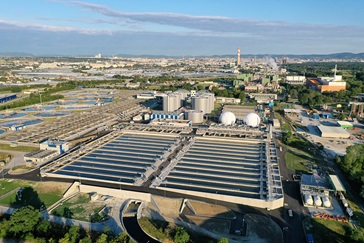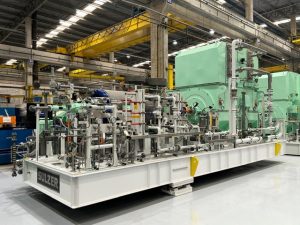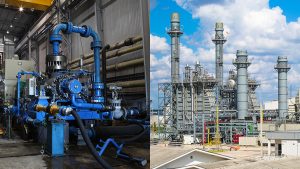Sulzer Supports one of Europe’s Biggest Wastewater Treatment Plants

Image source: Sulzer Management AG
The pioneering facility provides fresh water to Vienna and is now fully self-sufficient from an energy point of view, thereby reducing the city’s annual carbon emissions by 40’000 tonnes.
Making major changes to an operational wastewater treatment facility is always a challenge, especially when that site serves a major city and processes up to 1’000 cubic meters of wastewater per minute. Vienna’s old wastewater treatment plant consumed more than 1% of all the electricity produced by the city’s largest energy provider. With the E_OS (Energy Optimization through Sludge Treatment) project, the city’s water utility ebswien turned the facility into a sustainable, self-powering facility, producing electricity and heat from biogas using sewage sludge.
With decades of experience in water and wastewater treatment applications, Sulzer helped boost the plant’s energy output and ensured that processes across the site were designed with maximum energy efficiency in mind. Under construction since 2015, the project replaced the original primary sedimentation and aeration basins with new anaerobic digesters and a combined heat and power plant. The new facility now produces around 78 GWh of electricity and 82 GWh of heat from biogas, meaning the plant will be able to generate all the energy it requires for wastewater treatment, with energy to spare, while reducing Vienna’s annual carbon emissions by 40’000 tonnes.
At the center of the upgraded plant are six 30-meter high digesters, each capable of generating biogas from 12’500 cubic meters of sludge. Sulzer delivered the mixer units for the digester tanks to keep the biogas production running optimally. In contrast to conventional equipment, Sulzer’s solution required smaller motors, thus unlocking energy savings. In addition, Sulzer’s highly efficient turbocompressors delivered further savings, cutting total power consumption by 400 kW, while reducing noise and offering very low maintenance costs.
Source: Sulzer Management AG







